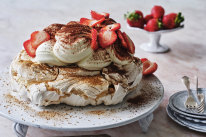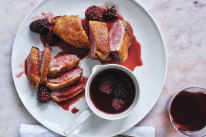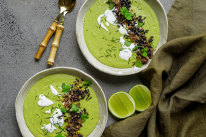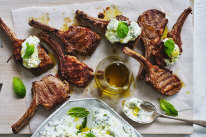RecipeTin Eats’ step-by-step-guide to assembling a pithivier (French pie)
The pithivier is, without doubt, a not-so-humble pie. But never fear, Nagi Maehashi is here to break it down and make it accessible to all.
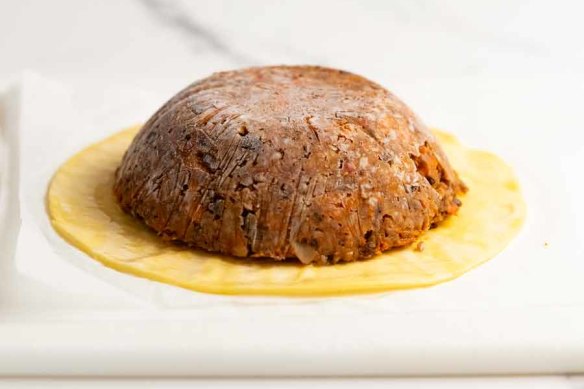
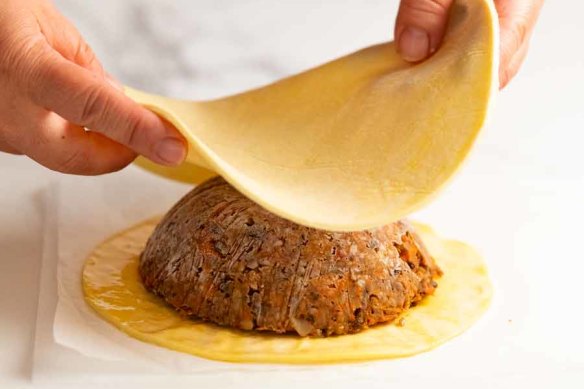

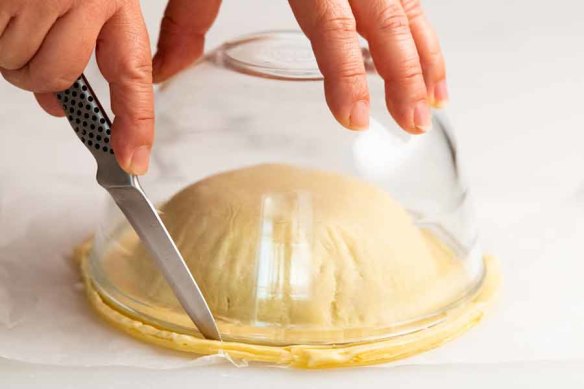
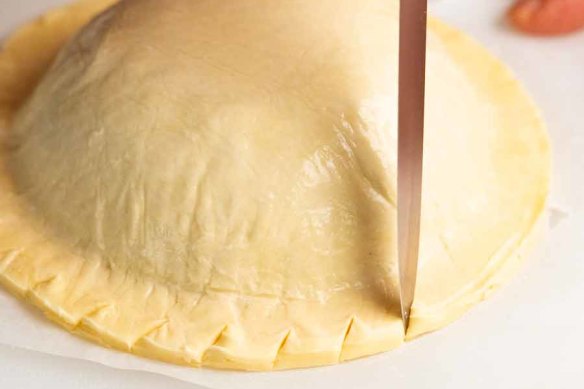
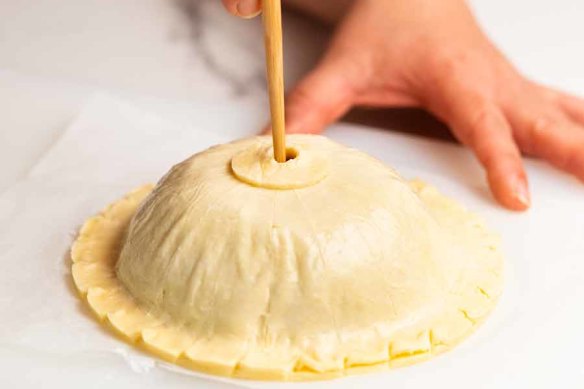
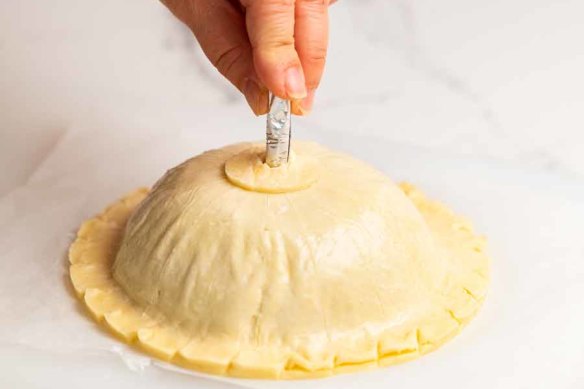
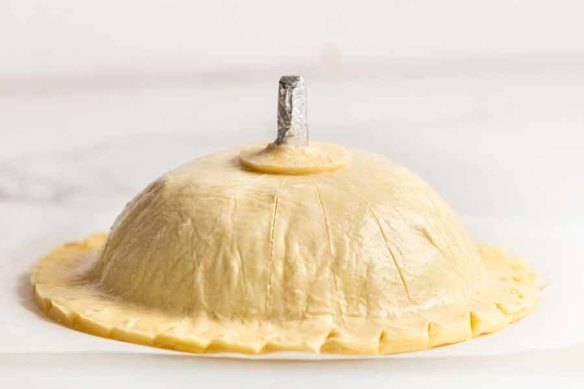
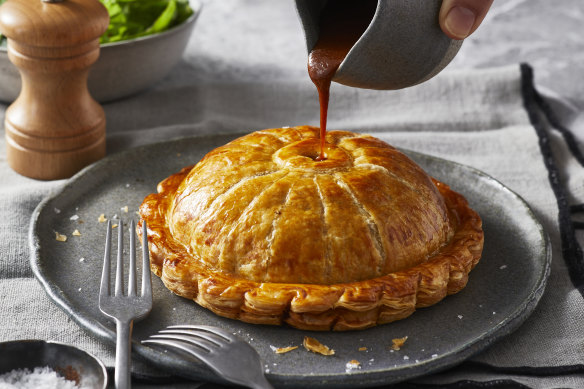
In the culinary world, a pithivier is described as a magnificent French pastry steeped in history. But when I’m asked, I simply describe it as an inverted meat pie with a gravy hole.
This enclosed round pie hails from the French town of Pithiviers, south of Paris, and comes in both sweet and savoury forms.
Considered difficult to make (and with a price tag to match), it’s actually something anyone can make without fancy equipment – and for about 80 per cent less than anything you’d buy from a high-end pastry store. OK, these are a little more rustic-looking than the stunning versions made by pastry masters, but they’re certainly just as delicious.
I’m very protective of the great Aussie meat pie. But there’s one thing the pithivier has going for it that our meat pie can never compete with – a base that’s 100 per cent crisp. This is because the sauce for the filling is served separately – and a less saucy filling means a crispier base!

Today, I’m sharing three savoury versions: chicken with a creamy white wine sauce, slow-cooked beef with rich gravy, and a deeply savoury mushroom pie. Don’t make me pick a favourite!
Decorating the pastry requires a steady hand – but it’s entirely optional. My lines are far from perfect.
Ingredients
2 preprepared frozen domes of pithivier filling
4 x 20-24cm square sheets of frozen butter puff pastry
2 eggs, separated, yolks and whites each lightly whisked
Method
Step 1
To freeze the filling into dome moulds, line two small mixing bowls with sheets of cling film large enough so there is an overhang all the way around. Firmly pack 1⅓ cups filling into each lined bowl. Choose a bowl size where the filling surface has a 12cm diameter and is 3.5cm deep. Smooth the filling surface, then fold up the overhanging cling wrap to cover surface. Freeze until firm enough to handle – at least 3 hours or overnight.
Step 2
Make 2 chimney tubes (see note). Fold a 10cm length of foil in half widthwise, then in half again to make a 2.5cm x 30cm strip. Cut the foil strip in half to create two 2.5cm x 15cm strips and roll each to create a tight tube 1cm in diameter. Preheat the oven to 180C fan-forced (200C conventional).
Step 3
To make pastry rounds, partially thaw the puff pastry sheets. Cut 2 x 20cm diameter rounds (lids), 2 x 17cm diameter rounds (bases) and 2 x 3cm diameter rounds (chimney hole rings). Place each base on a small sheet of baking paper on a work surface. Put the lids and chimney hole rings on another sheet of baking paper and freeze until required (see note).
Step 4
To assemble the pithiviers, remove the pastry lids and chimney holes from the freezer, and place one of the frozen filling bowls in a sink of hot tap water for 30 seconds to thaw the outside surface, allowing it to release from the bowl. Peel the cling film off the top of the filling and invert filling onto the pastry base (photo 1). Peel off and discard cling wrap. Brush the base perimeter with egg white and drape the puff pastry lid over the filling, taking care to remove air pockets and pressing edges to seal (photos 2 and 3). Optional (for neat edges that puff up better): return to freezer for 15 minutes or until the pastry becomes firm but not frozen solid. Using a bowl as a guide, trim around the base using a small knife held vertically (photo 4).
Step 5
To decorate, use the blunt edge (not cutting edge) of a small sharp knife to make 45-degree incisions around the base, 1.5 cm apart (photo 5). Then score lines from the centre of the dome down to each of these incisions, taking care not to pierce the pastry.
Step 6
To create the chimney hole, brush one side of the chimney hole ring with egg white then place ring egg white side down on the top of the dome. Make a small incision in the middle using a small knife, then use a chopstick to create a 8mm hole, moving the chopstick around in circles to widen as needed (photo 6). Go down into the filling as far as you can without piercing the pastry base (depth will depend on how frozen the filling is, don’t worry if you can’t go too far). Insert the chimney tube (photo 7). Repeat this entire process to make the second pithivier.
Step 7
To bake the pithiviers, transfer both pies and baking paper onto a large baking tray. Trim excess paper so it doesn’t touch the other pithivier. Brush surface with beaten egg yolks, avoiding the cut edges of the base (see note). Place in the oven and bake for 40-45 minutes or until the puff pastry is deep golden (see note). When cooked, remove from the oven and rest for 5 minutes then twist the chimney tube out.
Step 8
To serve, reheat the sauce (I microwave it in 20-second bursts) and stir until smooth, using a little water if it is too thick to pour. Transfer to a small jug alongside the pithiviers. To eat, fill the gravy hole with sauce – overflow is encouraged. Cut each pithivier in half to appreciate the oozing sauce. Serve yourself the larger piece topped with remaining sauce.
Notes
- It’s easier to handle puff pastry that is still partially frozen, rather than fully thawed (sticky and floppy!). Make one pie at a time and keep the unused puff pastry in the freezer until required. It takes minutes to thaw!
- The filling is already quite juicy, but not as saucy as a traditional Aussie meat pie. All three fillings (see recipes below) have intense flavour so you do not need much sauce for serving.
- Avoid brushing egg on the cut edge of the base so the pastry will puff up more.
- If the filling was frozen overnight before cooking, double-check the filling is hot before serving, using a metal skewer or thermometer (65C+). If it is not hot enough, cover pithiviers loosely with foil once the pastry is golden enough, and return to the oven.
- The pies can be assembled then frozen (without egg yolk wash), thawed overnight in the fridge (12-24 hours), then baked the next day. Brush with egg yolk just before baking. It’s about 95 per cent as good as freshly constructed and baked.
Appears in these collections
The best recipes from Australia's leading chefs straight to your inbox.
Sign upFrom our partners
Similar Recipes
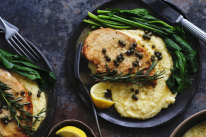
Speedy chicken scaloppine with capers, lemon, rosemary and polenta
- 30 mins - 1 hr
- Julia Busuttil Nishimura
More by Nagi Maehashi
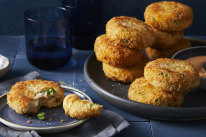
The RecipeTin magic touch that lifts these tuna patties from meh to marvellous
- 30 mins - 1 hr
- Nagi Maehashi

What do you call this, dhal? No, it’s RecipeTin Eats’ lentil chickpea coconut curry
- 30 mins - 1 hr
- Nagi Maehashi
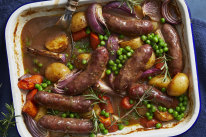
RecipeTin Eats’ easy-peasy sausage and vegie one-tray wonder (with hands-off gravy)
- 30 mins - 1 hr
- Nagi Maehashi

